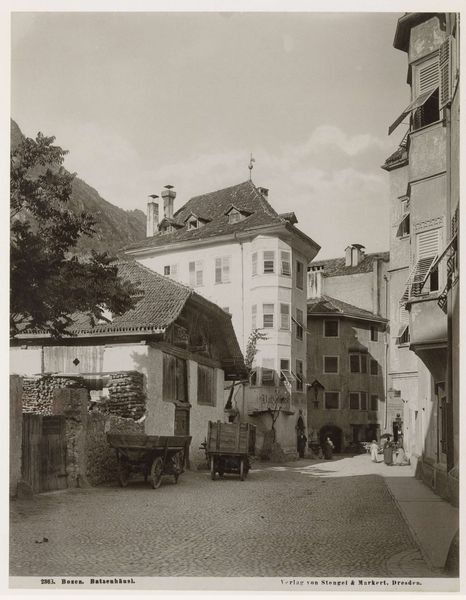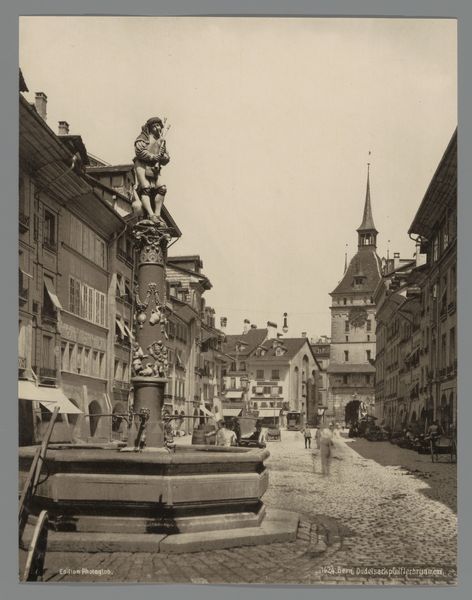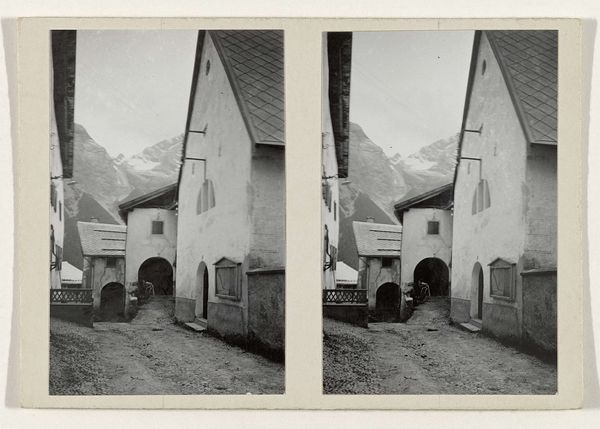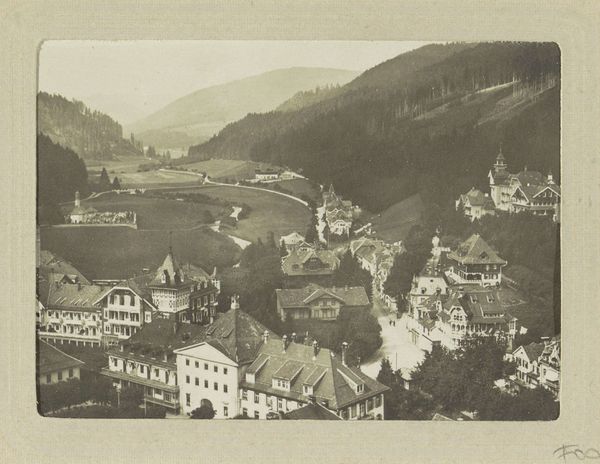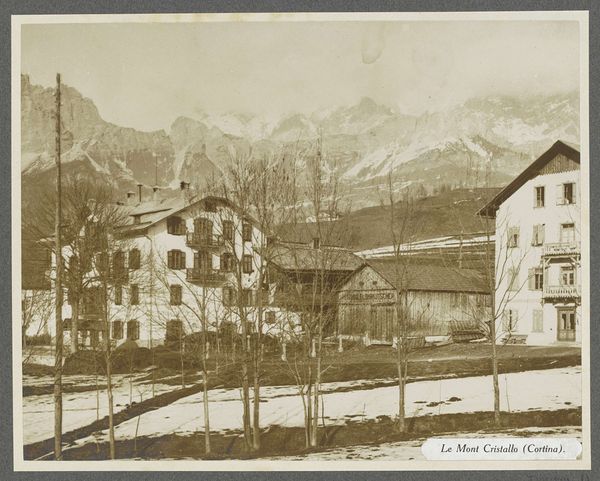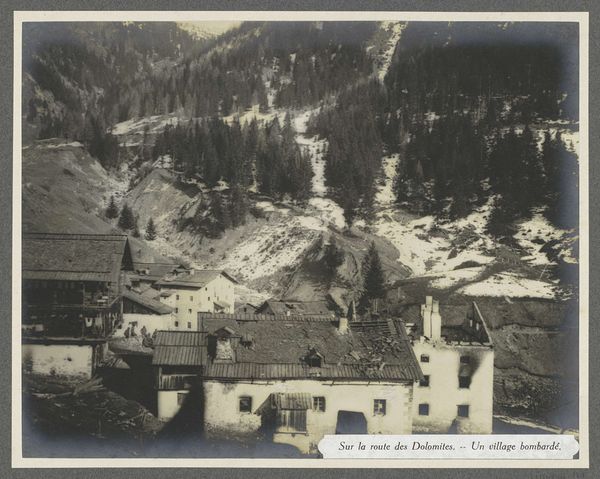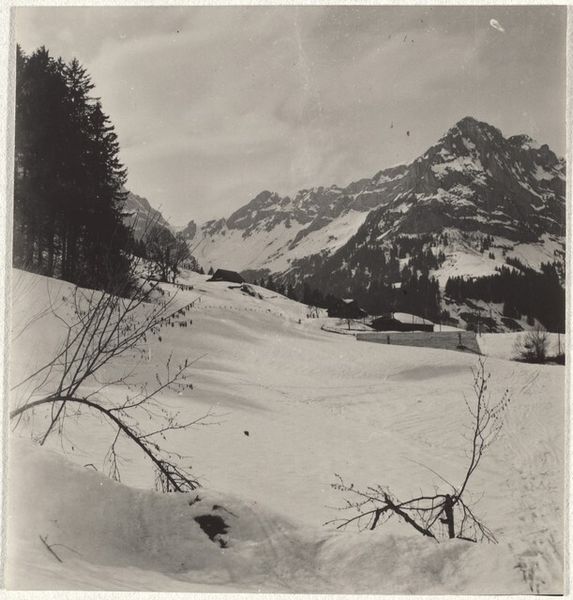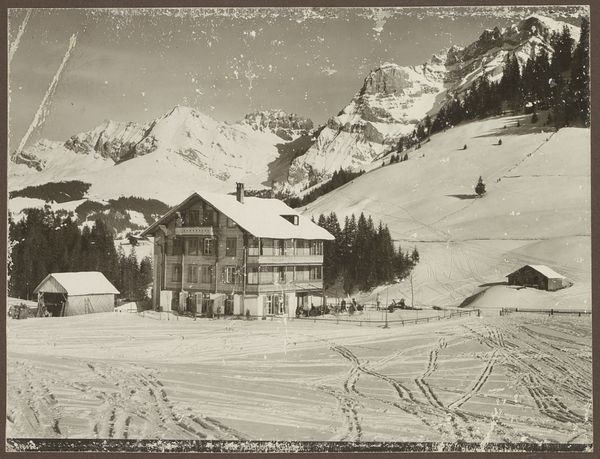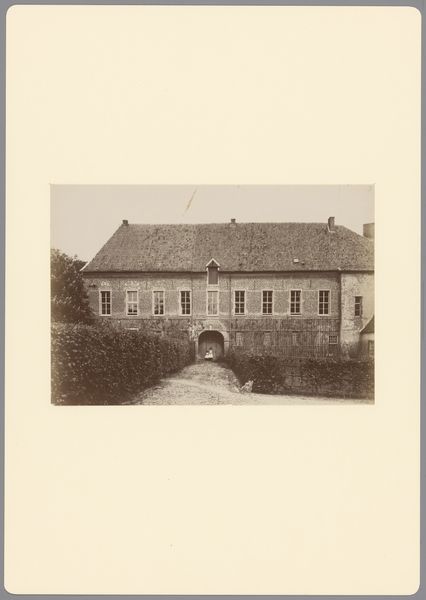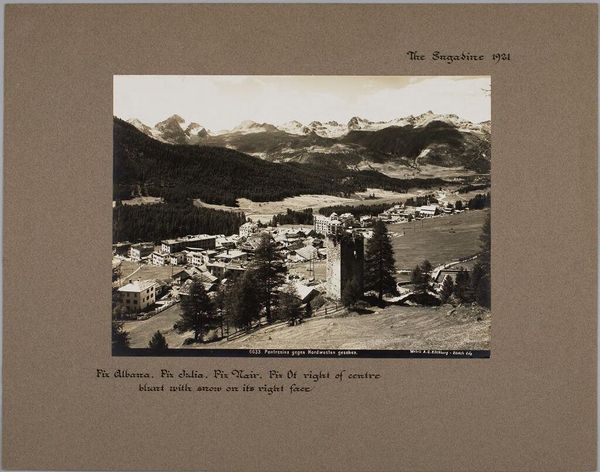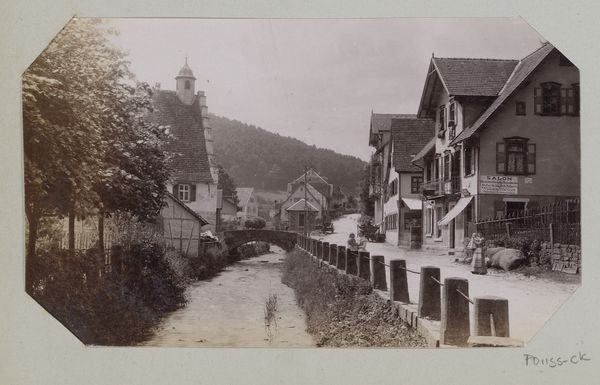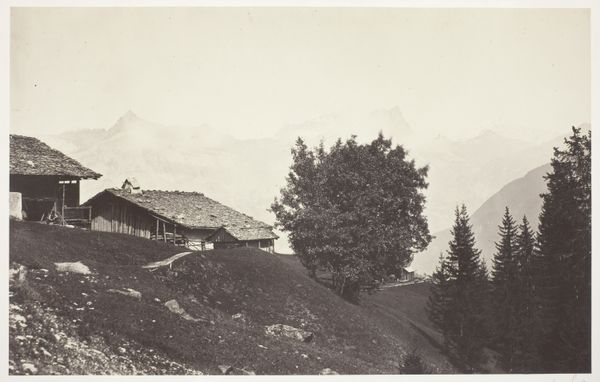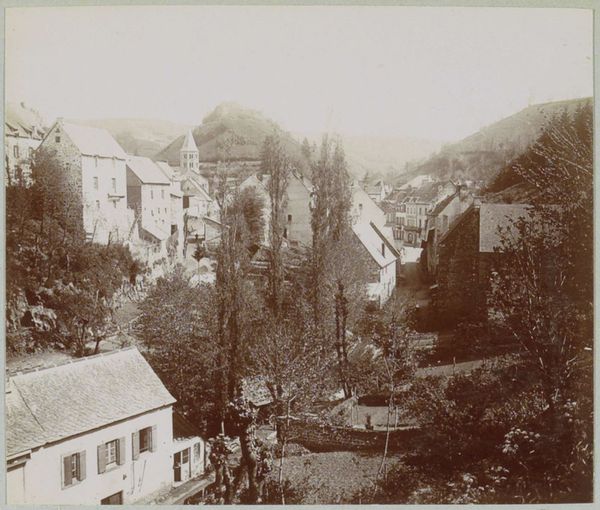
print, photography
#
film photography
# print
#
landscape
#
photography
#
monochrome photography
#
cityscape
Dimensions: image: 5.8 x 5.6 cm (2 5/16 x 2 3/16 in.) sheet: 6.4 x 9.4 cm (2 1/2 x 3 11/16 in.)
Copyright: National Gallery of Art: CC0 1.0
Editor: So, this photograph is titled "Building--Landscape" by Robert Frank, and it looks like it was taken between 1941 and 1945. It’s a black and white print featuring a snowy landscape with a grand building in the background. There's something almost stark about the contrast. How do you interpret this work? Curator: What grabs me are the signs of labor here. Look at the stacked wood meticulously placed along the snow path. It makes you wonder about the person who gathered and prepared those logs for winter and what their experience was. Who has to work for whom for these buildings to function, and in what socio-economic structure does that happen? Editor: That's a side of it I hadn't considered. I was initially focused on the visual contrast between the snow and the architecture, and the sort of bleak atmosphere. Curator: The landscape, frozen as it is, almost feels like another material shaped by human actions. And what about the camera itself – the machinery, film, and the darkroom labour required to create the image we are looking at? Editor: It makes you realize there is so much unseen work involved in both the scene itself, and the creation of its representation! How does understanding that change our viewing experience, then? Curator: Well, I think it allows us to question the romantic view of the landscape that we might typically associate with similar scenes in painting for instance. It pushes us to think critically about what is consumed and what’s overlooked when looking at such an image, even subconsciously. Editor: I can see how focusing on the materiality and labour brings a whole new depth to what I initially saw as just a picture of a landscape! Thank you! Curator: My pleasure. Considering art through a materialist lens often helps us look at what underpins it.
Comments
No comments
Be the first to comment and join the conversation on the ultimate creative platform.

